The Erie is our Fallen Flag railroad for October 2023
Erie Railroad locomotives included both oddball steam and diesels right out of a builder’s catalog.

Camelback Mallets were rare indeed. This view of No. 2602 from about 1910 illustrates the enormous size of the low-pressure (forward) cylinders. The locomotive cab and tender are devoid of any lettering or numbers. Classic Trains collection


Mikado 3005, built by Baldwin in 1911, leads a way freight west near Alfred, N. Y., in 1950. Modifications to the 2-8-2 since construction include Elesco feedwater heater, disk main drivers, and a large 12-wheel tender. R. G. Nugent photo


Erie No. 2603, later No. 5014, was built in 1914 by Baldwin in Philadelphia. None of these 850,000-pound-plus locomotives were preserved. Herb Broadbelt


Lima-built S-4 no. 3389 represents the ultimate development of steam freight power on the Erie. Erie’s 2-8-4 was the basis of the design of Berkshires for Pere Marquette, Wheeling & Lake Erie, Chesapeake & Ohio, Virginian, and Richmond, Fredericksburg & Potomac. Lima Locomotive Works photo


In 1954, following GE’s breakup with Alco, GE built an experimental four-unit set of cab diesels. The UM20Bs tested on Erie for several years, wearing Erie lettering, before being rebuilt and sent to Union Pacific. No production models were built. General Electric photo


Two of Erie’s 14 EMD E8s lead a passenger train in the early 1950s. Erie Railroad photo


RS3 923 trundles through Jersey City in 1956. In commuter service, the RS3s could swiftly work a heavy train up to 50 mph, then dive in on station stops like a fighter plane. Jim Warsher photo


A pair of Erie Alco RS-3s, Nos. 915 and 1016, lead an eastbound freight out of Owego, N. Y., on June 2, 1951. S. K. Bolton photo

The Erie was a big user of the 2-8-0 Consolidation and 2-8-2 Mikado steam locomotive types. Going a step larger, the Erie experimented with articulated locomotives beginning with three Camelback 0-8-8-0s for pusher service in 1907. This evolved to the Baldwin-built 2-8-8-8-2 Triplex in 1914. (Virginian also tried this type.) Larger locomotive arrangements included 2-8-4 Berkshires and 2-10-2 Santa Fes. Passenger steam locomotives included 4-4-2, 4-6-0, and 4-6-2 types.
The last steam operation was on March 17, 1954, when K-1 Pacific 2530 brought a morning commuter train into Jersey City from Spring Valley, N.Y.
The Erie got involved with internal combustion early, buying several boxcab locomotives in the 1920s and several diesel switchers before World War II. It dieselized with a mix of Alco FA, PA, and RS engines, EMD F units and Geeps, and Baldwin road switchers, with the last steam run occurring in 1954. Erie merged with the Delaware, Lackawanna & Western to form Erie Lackawanna on Oct. 17, 1960, thus ending the history of Erie Railroad locomotives.





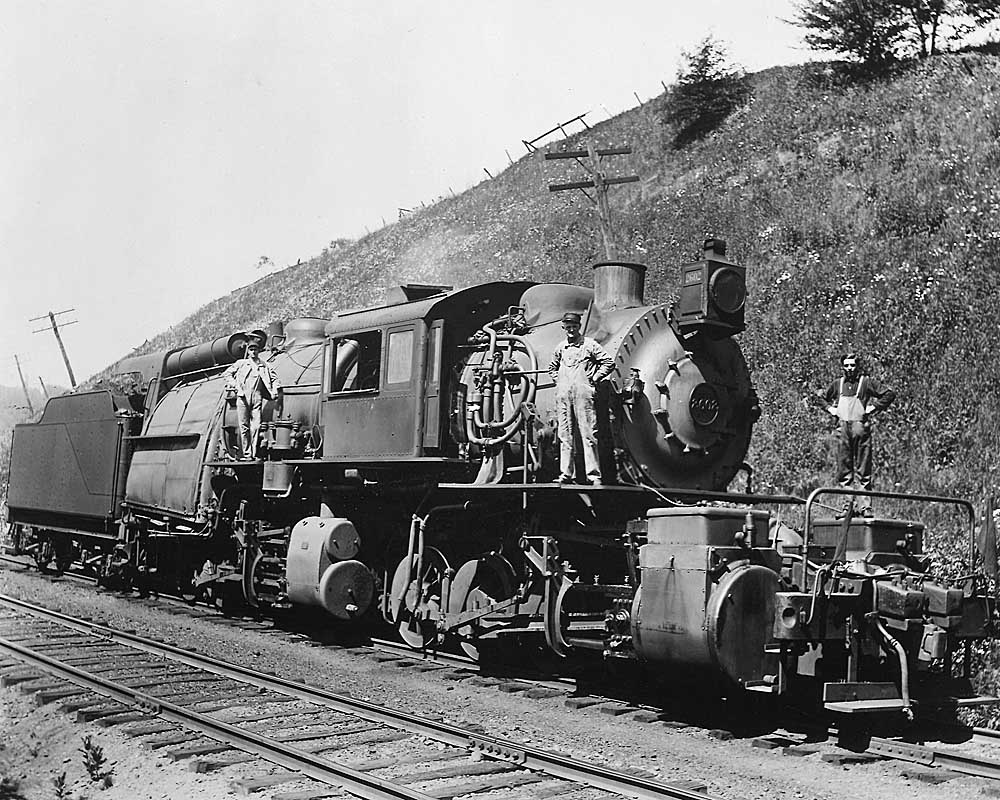

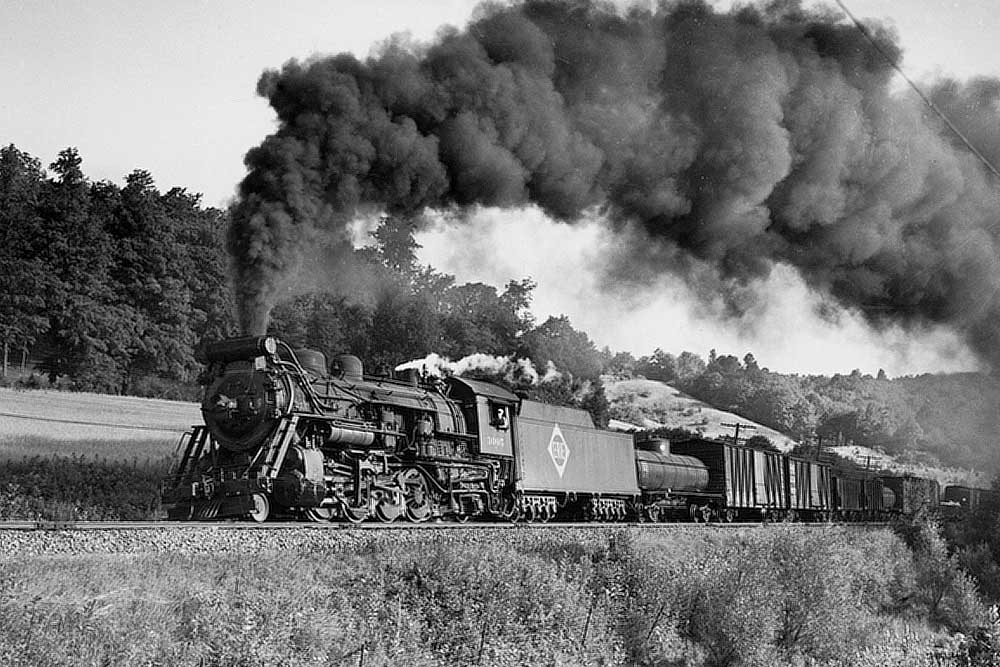

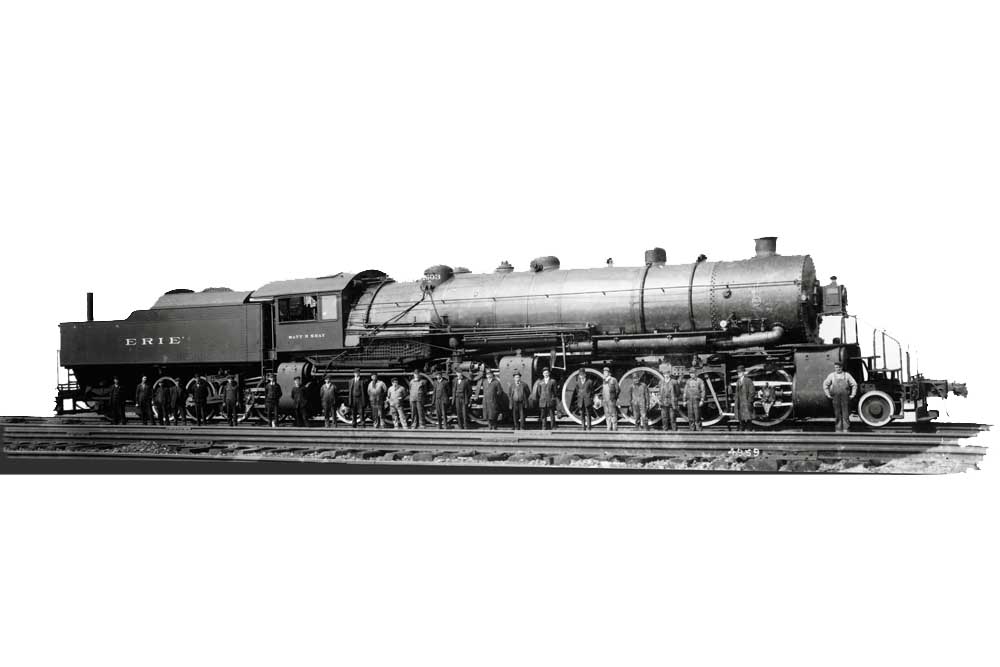

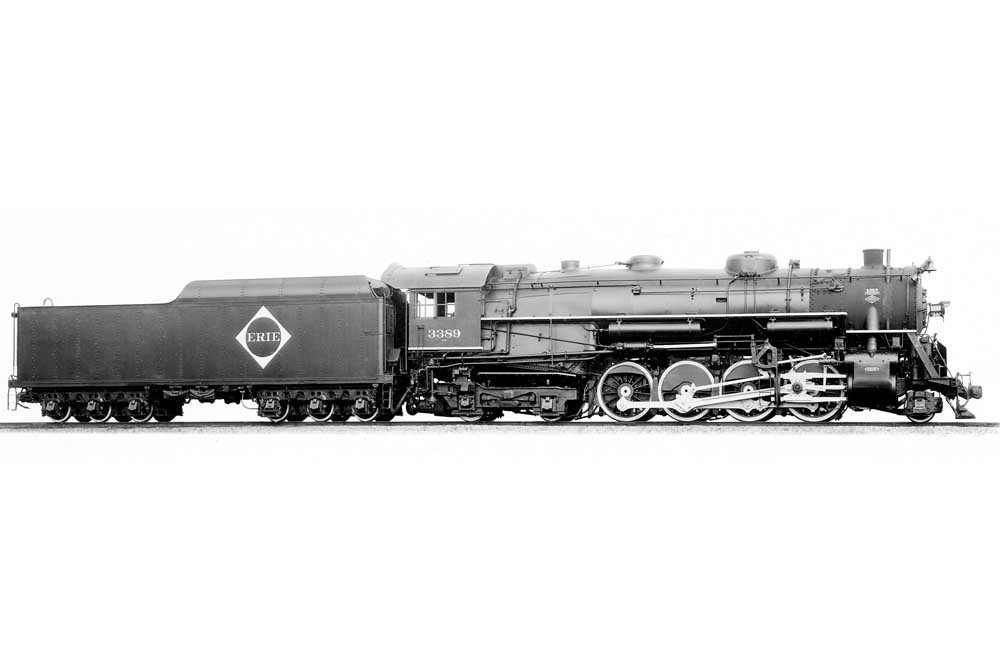

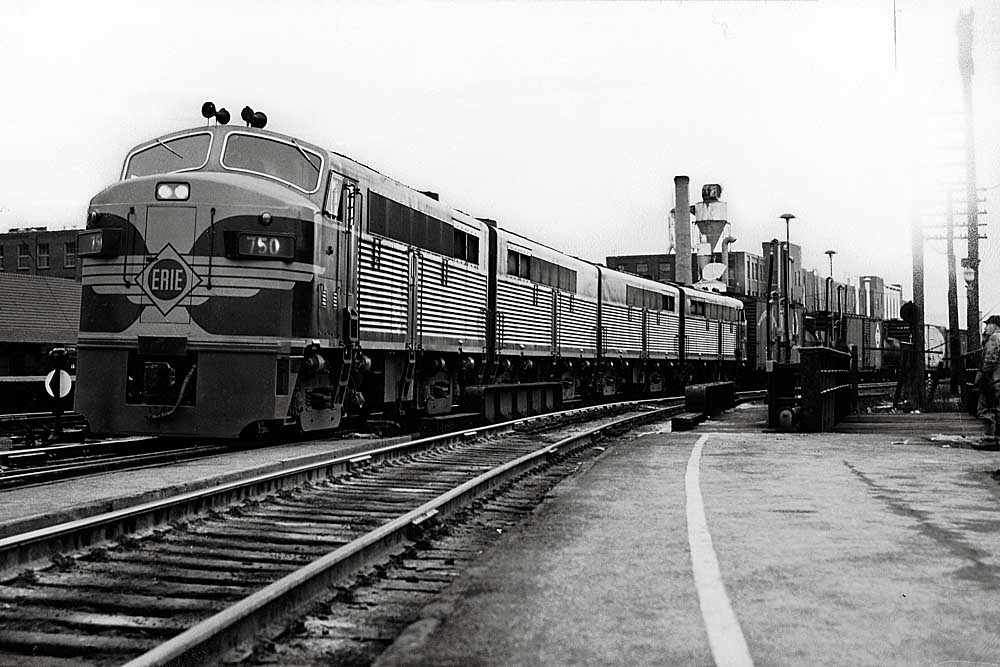

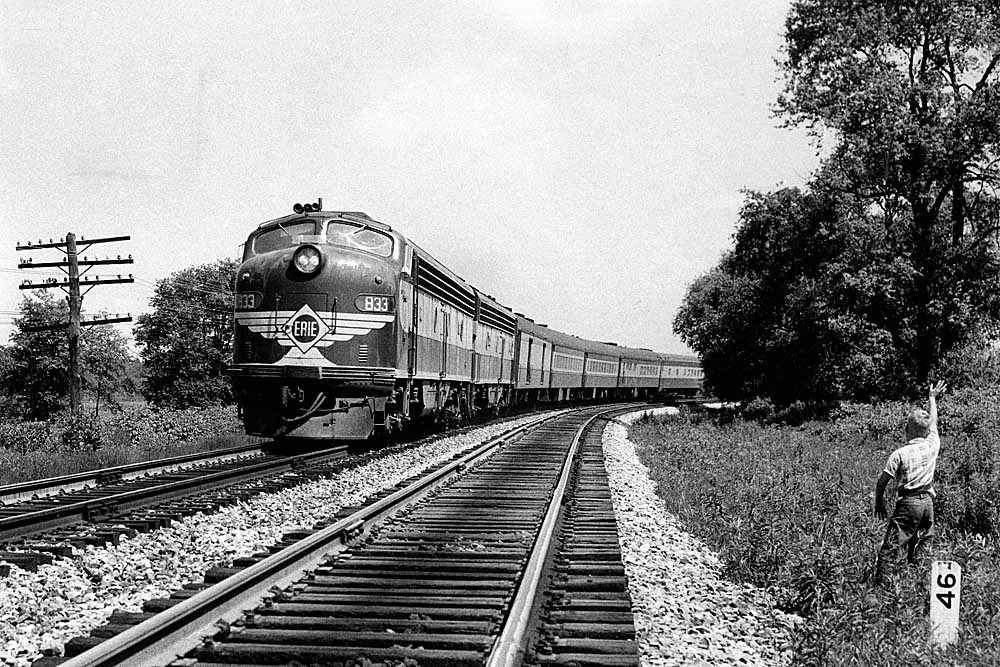

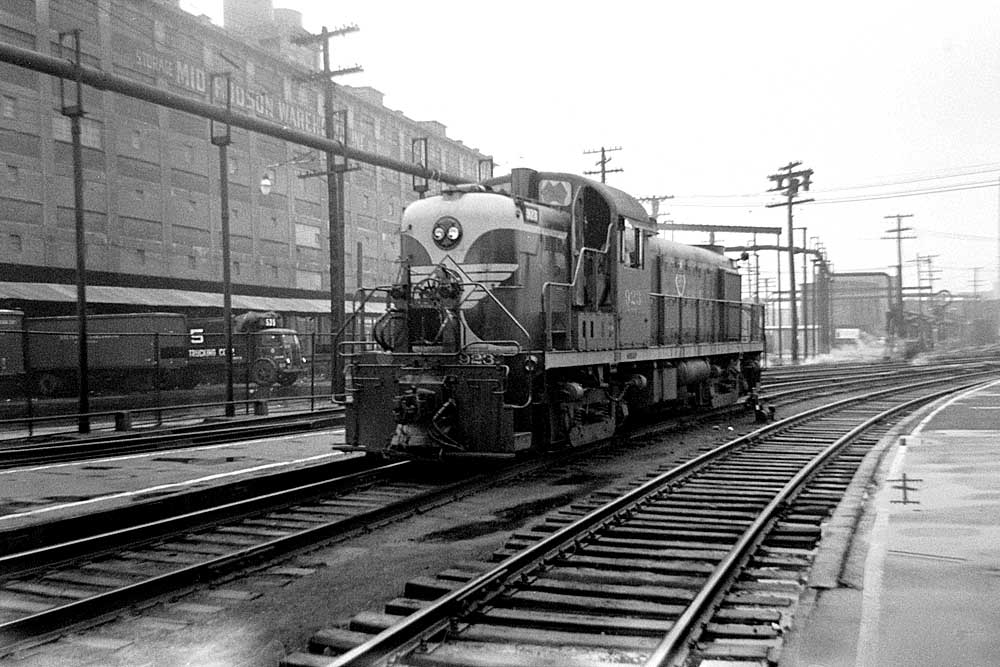

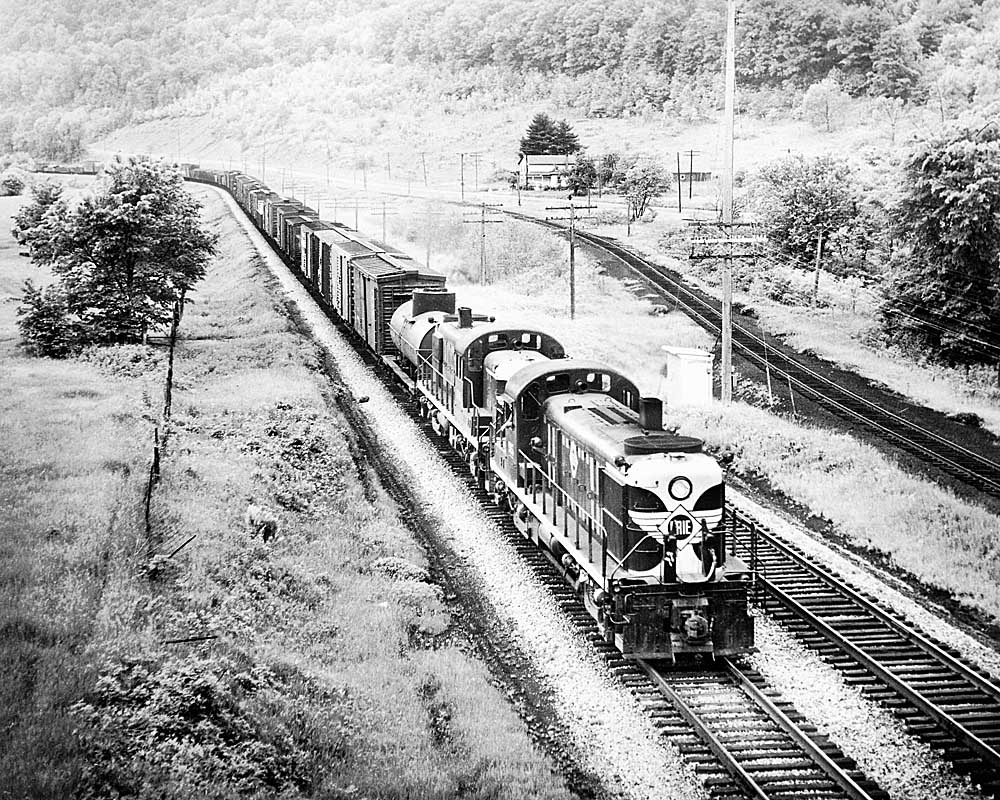





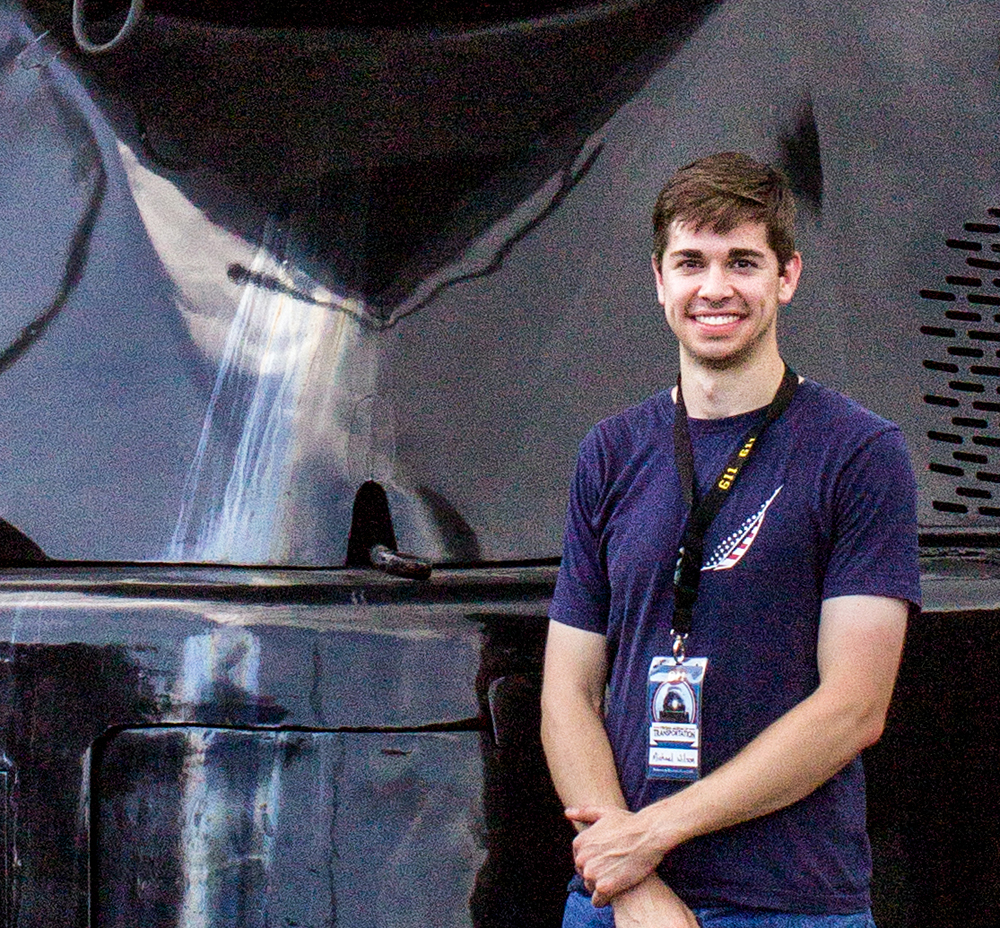




Outside of the 0-8-8-0 Camelbacks and the Triplexes, Erie’s motive power wasn’t that odd in relation to other roads. Odd was that the thrifty Erie did not rebuild the Triplexes into two engines each like The Virginian did. They did rebuild the Angus types and got a few more years.
Even their diesel mix wasn’t much different than others who were trying to dieselize as rapidly as possible with what the builders could make. They did get some Lima diesels, the only make you didn’t mention.